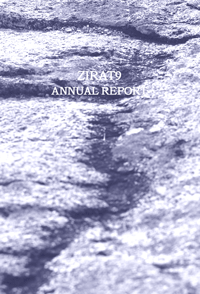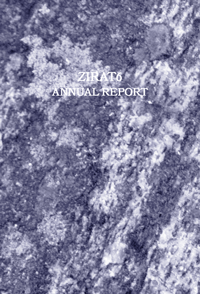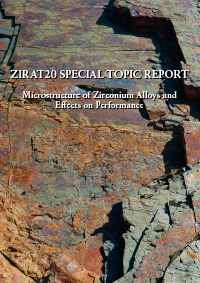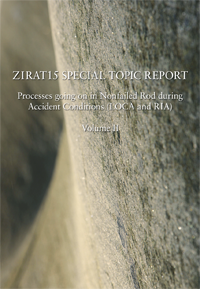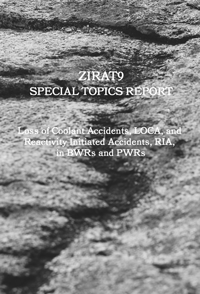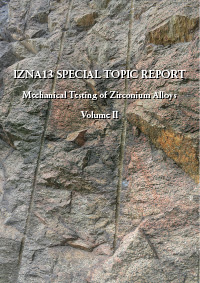Microstructure of Zirconium Alloys and Effects on Performance
(ZIRAT20/IZNA15 STR)
Microstructure plays a central role for the efficient use of zirconium alloys during service in nuclear reactors. The in-reactor performance of components made from zirconium alloys depends on the environment – neutron flux, high temperature and water chemistry – and the properties of the metal – corrosion resistance and mechanical strength and ductility. These properties are controlled by the microstructure of the alloy.
Microstructure describes the crystal phases present, their spatial and orientation distributions and their defect structure. The initial microstructure is determined by the alloy composition and the various working processes and heat-treatments required to fabricate the component and meet various specifications.
During service the microstructure is modified by interactions with neutrons and water. Research and development is aimed at optimising microstructures to resist the deleterious effects induced by the reactor environment.
This Report provides examples illustrating how microstructures are modified during fabrication and service and how these microstructures affect properties.
Fuel Reliability
(ZIRAT20/IZNA15 STR)
Although the performance of water reactor fuel has improved greatly relative to early experience, social, regulatory and operational incentives exist to both maintain the gains that have been achieved and to make further improvements in fuel reliability. The primary objectives in these areas are to increase fuel reliability by
- Reducing the primary fuel failure frequency and minimize the consequences of fuel failures when they occur and
- Minimizing operational effects due to factors such as fuel assembly and channel bowing, that can affect thermal margins (LOCA, DNB, Dryout) and core control capabilities (control rod insertion).
Maintaining and improving fuel reliability requires an understanding of the behaviour of fuel and materials as related to in-reactor conditions and the mechanisms that have been observed to cause fuel failures. A key factor in improving fuel reliability is the identification of the cause or causes of failure. Such information, in turn, requires the examination and analysis of irradiated fuel at reactor sites (poolside examinations), in hot cells and in related laboratories. Thus, to make progress toward ultra-high reliability fuel and to reduce the potential for post-failure degradation, it is imperative to examine both failed and non-failed (reference) fuel. The most cost efficient way to carry out these examinations is to begin with a good understanding of the known mechanisms of failure and degradation and of the principal methods for examining irradiated fuel. With such an understanding, fuel investigation and development programs can be focused on the likely causes of failure or degradation, while unnecessary costly and time consuming work can be minimized. One of the objectives of this Report is to provide such an understanding.
Processes Going on in Nonfailed Rod During Accident Conditions (LOCA and RIA) — Vol. II
(ZIRAT15/IZNA10 STR)
Processes going on inside a nonfailed fuel rod may have dramatic impact on fuel performance during normal operation and during accident conditions such as Loss Of Coolant Accident (LOCA) and Reactivity Initiated Accident (RIA) This volume II of the report describes the above information during accident conditions (RIA and LOCA). The associated volume I of the report describes the processes going on inside a nonfailed fuel rod during normal operation.
Loss of Coolant Accidents, LOCA, and Reactivity Initiated Accidents, RIA, in BWRs and PWRs
(ZIRAT9/IZNA4 STR)
This report gives insight and understanding of the LOCA and RIA issues and reviews the applicability of the relevant data. Specifically, the background data to the current (non-revised) LOCA criteria are discussed.
Mechanical Testing of Zirconium Alloys – Vol. II
(ZIRAT18/IZNA13 STR)
This report covers integral or specific phenomena testing of Zr alloys

